Text
Laser Eye Surgery vs Refractive Lens Exchange: A Conversation with A/Prof Chameen Samarawickrama
When most people think of refractive eye surgery, they typically associate it with laser eye surgery such as LASIK. However, there are other refractive surgery treatment options commonly performed to address vision correction needs. Determining the best vision correction treatment involves considering several factors. Things like age, prescription stability, and overall eye health play a crucial role in the decision making process. In this blog we chat with A/Prof Chameen Samarawickrama as he shares his expertise on the difference between two commonly performed refractive surgery procedures, Laser Eye Surgery and Refractive Lens Exchange (RLE).
What are the key differences between laser eye surgery and RLE?
Laser eye surgery involves reshaping the cornea using a laser, to correct vision reducing the need for glasses or contact lenses.
On the other hand, RLE or Refractive Lens Exchange is a surgical procedure that involves removing the eye’s natural lens and replacing it with an artificial intraocular lens (IOL). The IOL is implanted at the time of the surgery, and its power is calculated specifically for your eye.
Both procedures are commonly used to treat refractive errors to reduce dependence on glasses or contact lenses.
What factors make someone a suitable candidate for laser eye surgery?
Laser eye surgery is most suitable for individuals with stable prescriptions, generally under the age of 40. Good candidates have healthy corneas with sufficient thickness and no underlying eye conditions like glaucoma or severe dry eyes.
What characteristics make someone an appropriate candidate for RLE?
RLE is often recommended for individuals over 40, especially those starting to experience presbyopia (age related difficulty focussing at near and requiring reading glasses). For this age group there are fewer years of visual benefit from refractive laser surgery before the development of cataracts which would eventually require the removal of the natural lens during cataract surgery.
Another reason we would consider RLE rather than laser is the amount of correction required. RLE is more suitable for those with higher degrees of refractive error that are often outside the treatable range for laser correction or other modalities such as Implantable Collamer Lenses (ICL).
How does astigmatism factor into the decision between laser eye surgery and RLE?
Astigmatism can be corrected through both laser eye surgery and RLE. However, the extent of astigmatism and other refractive errors will influence the choice of procedure. Laser eye surgery is often an excellent option for individuals with mild to moderate astigmatism. For those with higher levels of astigmatism or other complex vision issues, RLE with a toric IOL may offer more effective correction in older patients.
How does the longevity of results compare between laser eye surgery and RLE?
Refractive laser surgery provides long-lasting results, but it’s important to note that eyes can still undergo age-related changes, such as presbyopia and cataract formation. Refractive Lens Exchange, being a lens replacement, offers a more stable correction for presbyopia and also eliminates the need for cataract surgery in the future.
In summary, what advice would you give to someone considering refractive eye surgery?
Refractive laser surgery provides long-lasting results, but it’s important to note that eyes can still undergo age-related changes, such as presbyopia and cataract formation. Refractive Lens Exchange, being a lens replacement, offers a more stable correction for presbyopia and also eliminates the need for cataract surgery in the future.
0 notes
Text
Nexus Eyecare: Leaders in Strabismus Treatment Innovation

Experience innovation in strabismus treatment with Nexus Eyecare. Our skilled specialists of cross linking eye surgery excel in strabismus treatment, ensuring optimal outcomes. Trust Nexus Eyecare for precise cross linking eye surgery with strabismus treatment, setting new benchmarks in eye care. Elevate your vision with our unmatched expertise, making Nexus Eyecare the forefront of excellence in crossed eye treatment. Your journey to clearer vision and strabismus correction begins with Nexus Eyecare's commitment to innovation and personalized care.
0 notes
Text
The Cataract Journey: Before, During and After

Inside your eye, you have a natural lens that focuses light onto your retina. A cataract occurs when this lens becomes cloudy, which affects the light passing through clearly. Cataracts are a common vision problem that can occur at any age and can significantly affect your quality of life. They are most commonly caused by ageing; however, certain medications, some general health conditions, or eye injuries can also contribute to early cataract growth.
Cataract surgery is a highly effective and safe procedure that often results in significantly improved vision. During surgery, your cataract surgeon removes the cloudy natural lens and replaces it with an artificial intraocular lens (IOL). At Nexus Eyecare, we use the latest diagnostic technology and surgical techniques to provide our patients with the best possible visual outcomes following cataract surgery. In this blog, we share what to expect before, during, and after your cataract journey with us.
Initial Consultation With Your Cataract Surgeon
Before cataract surgery, most patients present with symptoms of:
Reduced clarity, blurry or cloudy vision
Increased glare and difficulty focusing from light to dark spaces
Trouble with haloes at night, especially when driving
If not treated, cataracts continue to progress, causing increased symptoms and further vision loss.
During your initial consultation, your cataract surgeon will thoroughly examine your eye health and discuss your treatment options. Cataract surgery can be performed at any stage of cataract development; the decision to operate is mostly dependent on the degree of visual impairment and how much the cataract is affecting your daily life.
Once the decision to operate has been made, additional specialised tests are used to carefully measure your eye and calculate which lens will achieve the best vision for you. There are several different IOLs available. Your cataract surgeon will discuss and explain all the lens choices and help you choose which lens will work best for you and your lifestyle. It is important to understand the types of IOL available. To discover more, read our blog: What is an IOL and which one is the best fit for your lifestyle?
Prior To Your Surgery
The hospital will contact you a few days before the surgery with an admission time and fasting details. Your cataract surgeon will have discussed any medications that you are taking and provided instructions for them when you booked in for your surgery.
It is advisable to wash your hair, so you can avoid hair washing for a few days after your surgery.
On The Day Of Cataract Surgery
Cataract surgery is usually performed as an outpatient (day surgery) procedure. The cataract surgery only takes approximately 15-30 minutes; however, you will be at the surgery facility for longer to prepare your eye before surgery and allow for a brief recovery period afterwards.
Cataract surgery is performed by a cataract surgeon using local anaesthesia, which means you will be awake but won’t feel any pain. The reason local anaesthesia is preferred over general anaesthesia is:
Better patient safety: general anaesthesia carries a higher risk of complications than local anaesthesia
Faster recovery: Patients recover faster from a local anaesthetic; they often feel better afterwards and can return home on the same day
Cost-effective: Local anaesthesia is less expensive for the patient
In rare cases, where a patient cannot tolerate local anaesthesia or has special medical conditions, general anaesthesia may be used, but this is not the standard practice for cataract surgery.
During the surgery, the cataract surgeon will create a tiny incision in your eye to access the cataract. The cataract is then removed through the incision, and an IOL is inserted to replace the natural lens. The incision is so small that it does not usually require any stitches; instead, it seals naturally. Your eye is then covered with a protective shield to prevent accidental rubbing or pressure on the wound. The shield is worn overnight and removed the next day at your postoperative visit.
After surgery, you will spend some time in a recovery area before heading home.
After Cataract Surgery
The day after your surgery, you will return to our clinic, your shield will be removed, and your cataract surgeon will examine your eye. One of the most remarkable aspects of cataract surgery is the rapid improvement in vision. Many patients report significantly clearer and more vibrant vision shortly after the procedure. While the initial visual improvement is often swift, it can take a few days to weeks to reach optimal clarity. Remember, everybody is different, every eye is different, and your recovery will depend on you and the health of your eye. Some do’s and don’ts following cataract surgery include:
Do’s
Don’ts
After surgery, you will be given some eye drops to use. Eye drops prevent infection and reduce inflammation. Make sure you use the eye drops as directed by your cataract surgeon.
Do not rub your eye, and try to avoid getting any water in the eye when showering and washing your face. Try to avoid washing your hair for the first few days if possible.
No swimming, even with goggles on.
Try to rest, be patient, and let your body heal!
You can gradually resume light activities, such as walking, reading, and watching TV.
Avoid heavy lifting, strenuous activities, and excessive bending to prevent pressure and strain on the eye.
Make sure you attend your postoperative appointments so your cataract surgeon can monitor your progress and ensure your eye is healing correctly.
Do not drive; your cataract surgeon will advise when you are ready to return to driving.
The benefits of cataract surgery can extend beyond visual improvement. Patients often regain their independence, for some, it means they can return to everyday activities like driving or reading that were once hindered by cataract development.
To find out if cataract surgery is right for you, visit Nexus Eyecare and let us guide you on your journey to brighter, clearer vision.
0 notes
Text
Best Glaucoma Treatment & Glaucoma Laser Surgery At Nexus Eyecare

Explore the Best Glaucoma Treatment & Glaucoma Laser Surgery at Nexus Eyecare. Glaucoma, a leading cause of blindness, involves progressive optic nerve damage. Timely intervention is crucial for Glaucoma Treatment. Utilizing advanced technology, we ensure timely & effective Glaucoma Treatment for patients. Our specialists ensure best Glaucoma Treatment by incorporating eye drops, laser therapy, and surgery, providing finest care for your eyes. Rely on Nexus Eyecare for Glaucoma Laser Surgery: Your ally for comprehensive Glaucoma care and the best Glaucoma surgery options.
0 notes
Text
Consult with Skilled Retina Specialists at Nexus Eyecare

Visit Nexus Eyecare to meet our highly skilled retina specialists specializing in retinal disease treatment, ensuriung best results. With extensive experience in retinal disease treatment, our retina specialists offer precise diagnoses and personalized treatment plans for conditions such as macular degeneration, diabetic retinopathy, and retinal vein occlusion. Utilizing state-of-the-art technologies, our retina specialists deliver advanced treatments like intravitreal injections and retinal laser surgery. Trust Nexus Eyecare for dedicated retina specialists near me, providing solutions for the best possible outcomes to safeguard your vision.
0 notes
Text
Get best cataract eye surgery options at Nexus Eyecare|Consult today

Meet leading cataract surgeons at Nexus Eyecare. Our advanced cataract eye surgery will help you improve your vision. Book a consultation session today at Blacktown and Norwest and get treated by the best cataract surgeons.
0 notes
Text
Inherited retinal diseases (IRD)

Inherited retinal diseases (IRD) are a group of rare genetic conditions that affect the retina, the delicate tissue at the back of the eye responsible for vision. These conditions are typically caused by mutations in specific genes responsible for maintaining the health and function of the retina. IRD can result in varying degrees of visual impairment, and in some cases, lead to blindness. They can be inherited in several ways, such as dominant, recessive and sex-linked.
The most common types of IRD include Retinitis Pigmentosa (RP), Stargardt disease, Bests Juvenile Dystrophy and others.
Symptoms of IRD
The symptoms of IRD can vary widely, even among individuals with the same condition. According to retina specialists, night blindness, tunnel vision, and difficulty distinguishing colours are common early signs. Vision loss is usually slow-progressing. In later stages, central vision may also be affected, impacting simple daily activities like reading and recognising faces. Living with IRD often requires adapting to a changing visual landscape.
Diagnosis of IRD
Early and accurate diagnosis is pivotal in managing IRD. Electrophysiology testing often helps clarify if IRD is present or not, and genetic testing can help identify specific mutations for an accurate diagnosis and management plan.
Treatment
Regular visits to an ophthalmologist or retinal specialist, to monitor the progression of the disorder, manage symptoms, and provide support are important. Genetic counselling may also be recommended to understand the inheritance pattern and potential implications for children and family members. Additionally, emerging treatments and clinical trials may be discussed with retina specialists as part of ongoing care.
While there is currently no cure for most IRD, ongoing research holds promise for future treatments. Gene therapy, stem cell therapy and retinal implants are among the innovative approaches being explored to slow or halt the progression of vision loss. Additionally, low vision aids, orientation and mobility training, and adaptive technologies play a crucial role in managing visual challenges and enhancing the quality of life for those affected by IRD.
Support groups and advocacy organizations are valuable resources to connect individuals and families affected by IRD. These communities provide a platform for sharing experiences, accessing resources, and participating in research initiatives that aim to unravel the mysteries of these complex disorders.
IRDs are challenging and often difficult to predict and manage. As science continues to advance, there is hope for improved diagnostics and ground-breaking treatments. Through increased awareness, support networks, and ongoing research, vision loss due to IRD may one day be preventable or effectively managed. It is important for individuals with IRDs to work closely with their healthcare team and retina specialists to address their specific needs and stay informed about available options.
0 notes
Text
Nexus Eyecare- Leading Glaucoma treatment experts near you!

Experience exceptional Glaucoma treatment at Nexus Eyecare. Glaucoma is a leading cause of blindness hence early intervention is crucial to save the sight. We employ cutting-edge technology for early detection of Glaucoma and subsequent Glaucoma treatment. We personalize treatment for every eye, using eye drops or Glaucoma laser surgery as required, thus guaranteeing good eye care. Trust Nexus Eyecare for comprehensive Glaucoma care and the best in vision preservation. Book your appointment today!
0 notes
Text
Nexus Eyecare- Expert eye care clinic for your eye health!
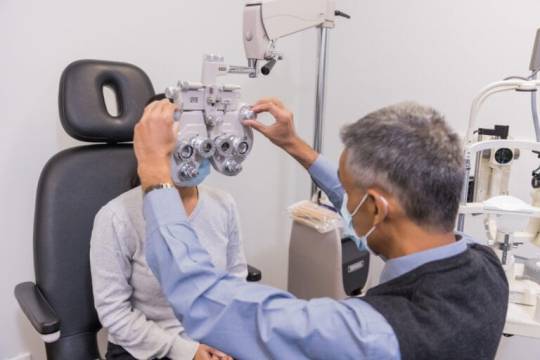
For personal eye care solutions, visit Nexus Eyecare. Our eye experts employ modern technology to ensure the best tailor-made solutions for your visual issues. Visit our specialist eye care clinic for the best eye health.
0 notes
Text
Needles and Nerves - Eye Injections Unveiled
When it comes to medical procedures, especially ones involving our eyes, it’s normal to feel nervous and apprehensive. This is particularly common for patients experiencing their first intravitreal injection treatment.
An intravitreal injection is a medical procedure performed by an eye specialist to treat various eye conditions, most commonly for retinal disease treatment. It involves the injection of medication directly into the vitreous, the clear gel-like fluid that fills the inside of the eye. This enables the medication to be delivered directly to the retina or nearby structures, ensuring it reaches its intended destination at the right concentration, making it more effective and reducing potential side effects associated with systemic retinal disease treatments.
While concerns about having an injection into your eye are natural, understanding the procedure and knowing the precautions your eye specialist takes can alleviate fears. The following are some common questions patients often ask when discussing intravitreal treatment.
While concerns about having an injection into your eye are natural, understanding the procedure and knowing the precautions your eye specialist takes can alleviate fears. The following are some common questions patients often ask when discussing intravitreal treatment.
1. Will a needle in my eye hurt?
One of the most common fears is pain. While no one enjoys getting a needle in their eye, it’s important to know that the procedure is always performed using local anaesthesia. This means that your eye is numbed, and you should only feel minimal discomfort, if any, during the procedure. Some people describe the sensation as a gentle push or pressure feeling. For most patients, the thought of the procedure is worse than the procedure itself.
2. Will I see the needle?
Using a very fine needle, the eye specialist injects the eye through the sclera (the white part of the eye). The needle is inserted whilst the patient is looking down, so they do not see the needle coming towards their eye.
3. What if I blink or move?
The patient is sat in a reclined position, and the eye specialist uses a small clip, called a speculum, to hold the eyelids apart and stop them from blinking. The procedure itself is very fast, and often over before any movement can be made.
4. What about infection?
An intravitreal injection is performed in a minor procedure room within the ophthalmic clinic. The risk of infection is very low. We follow strict sterilization protocols; the eye and the surrounding skin are carefully ‘cleaned’ with antiseptic to minimize the risk of infection.
5. Will I be able to see it when I go home?
Vision can be blurry following your eye injection. This is usually due to the eye drops instilled to examine your eye prior to your treatment and not from the procedure itself. Some people may see small blobs of the injected medication floating in their vision, but this is only temporary.
You can also have a foreign body sensation in the eye for around 24 hours which is due to the antiseptic used to avoid infection.
Intravitreal injections have revolutionised the treatment of many eye diseases, offering a targeted and effective way to deliver medication to the eye. While the thought of an injection into your eye may seem daunting, it is a well-tolerated and commonly performed procedure that has been used to treat and preserve vision for countless individuals. If you or a loved one requires an intravitreal injection, you can rest assured that this procedure is conducted with precision and care by an experienced eye specialist at Nexus EyeCare.
1. Will a needle in my eye hurt?
One of the most common fears is pain. While no one enjoys getting a needle in their eye, it’s important to know that the procedure is always performed using local anaesthesia. This means that your eye is numbed, and you should only feel minimal discomfort, if any, during the procedure. Some people describe the sensation as a gentle push or pressure feeling. For most patients, the thought of the procedure is worse than the procedure itself.
2. Will I see the needle?
Using a very fine needle, the eye specialist injects the eye through the sclera (the white part of the eye). The needle is inserted whilst the patient is looking down, so they do not see the needle coming towards their eye.
3. What if I blink or move?
The patient is sat in a reclined position, and the eye specialist uses a small clip, called a speculum, to hold the eyelids apart and stop them from blinking. The procedure itself is very fast, and often over before any movement can be made.
4. What about infection?
An intravitreal injection is performed in a minor procedure room within the ophthalmic clinic. The risk of infection is very low. We follow strict sterilization protocols; the eye and the surrounding skin are carefully ‘cleaned’ with antiseptic to minimize the risk of infection.
5. Will I be able to see it when I go home?
Vision can be blurry following your eye injection. This is usually due to the eye drops instilled to examine your eye prior to your treatment and not from the procedure itself. Some people may see small blobs of the injected medication floating in their vision, but this is only temporary.
You can also have a foreign body sensation in the eye for around 24 hours which is due to the antiseptic used to avoid infection.
Intravitreal injections have revolutionised the treatment of many eye diseases, offering a targeted and effective way to deliver medication to the eye. While the thought of an injection into your eye may seem daunting, it is a well-tolerated and commonly performed procedure that has been used to treat and preserve vision for countless individuals. If you or a loved one requires an intravitreal injection, you can rest assured that this procedure is conducted with precision and care by an experienced eye specialist at Nexus EyeCare.
To Read full blog:
https://nexuseyecare.com.au/retinal-disease/needles-and-nerves-eye-injections-unveiled?utm_source=referral&utm_medium=blog-submission&utm_campaign=retinal-disease
0 notes
Text
Needles and Nerves - Eye Injections Unveiled
When it comes to medical procedures, especially ones involving our eyes, it’s normal to feel nervous and apprehensive. This is particularly common for patients experiencing their first intravitreal injection treatment.
An intravitreal injection is a medical procedure performed by an eye specialist to treat various eye conditions, most commonly for retinal disease treatment. It involves the injection of medication directly into the vitreous, the clear gel-like fluid that fills the inside of the eye. This enables the medication to be delivered directly to the retina or nearby structures, ensuring it reaches its intended destination at the right concentration, making it more effective and reducing potential side effects associated with systemic retinal disease treatments.
While concerns about having an injection into your eye are natural, understanding the procedure and knowing the precautions your eye specialist takes can alleviate fears. The following are some common questions patients often ask when discussing intravitreal treatment.
To Read full blog:
0 notes
Text
Can my cataract grow back?
Cataract surgery is a common and highly effective procedure to remove a cloudy lens and replace it with an artificial one, often resulting in significantly improved vision. One question patients often ask cataract surgeons when considering surgery is – can my cataract grow back?
Before delving into whether cataracts can grow back, it is essential to understand what cataracts are and how cataract surgery works.
Inside your eye, you have a natural lens that focuses light onto your retina. A cataract occurs when this lens becomes cloudy and affects the light passing through clearly.
This often results in symptoms such as:
● Blurred or hazy vision
● Increased sensitivity to glare and lights
● Reduced night vision
● Reduced colour and contrast sensitivity
During cataract surgery, the cataract surgeon removes the cloudy natural lens and replaces it with an artificial intraocular lens (IOL). Once the natural lens is removed, it cannot regenerate; therefore, a cataract simply cannot grow back.
Sometimes following cataract surgery, patients can develop a posterior capsular opacification (PCO). This is a common condition that can occur months or even years after cataract surgery is performed. Some people describe this as a ‘secondary cataract’ because it can cause gradual blurry or hazy vision mimicking the symptoms of a cataract. A PCO is not your cataract growing back, it is a clouding of the lens capsule. The capsule is a thin, transparent membrane that covers your natural lens. During cataract surgery, the cataract
surgeon removes the anterior part of the lens capsule and the opaque lens material, and then positions the IOL inside the remaining posterior capsule. Sometimes after cataract surgery, cells can gather on the surface of the posterior capsule causing it to become cloudy. Fortunately, PCO is easily treated with a quick laser procedure called a YAG capsulotomy. During the procedure, the cataract surgeon uses a laser to create a hole in the capsule allowing the light to pass through, whilst the remaining edge of the capsule continues to hold the IOL in place. The procedure is quick, painless, and performed in an Ophthalmologist’s consultation room. Following a YAG laser capsulotomy, most patients experience a rapid improvement in their vision.
While cataract surgery can significantly improve vision, it does not correct for other eye conditions, such as glaucoma and age-related macular degeneration. So, it is possible for your vision to change over time due to the development of different eye conditions. It is vital to maintain regular eye examinations with an eye care professional, to monitor your eye health.
Cataract surgery is a highly effective and permanent solution for treating cataracts. It is a safe and reliable way to restore vision and improve your quality of life. If you are considering cataract surgery, book an appointment with your Ophthalmologist to discuss any questions you may have.
For more information
Visit us at : https://nexuseyecare.com.au/cataract/can-my-cataract-grow-back/?utm_source=referral&utm_medium=article-submission&utm_campaign=cataract
0 notes
Text
Can my cataract grow back?

Cataract surgery is a common and highly effective procedure to remove a cloudy lens and replace it with an artificial one, often resulting in significantly improved vision. One question patients often ask cataract surgeons when considering surgery is – can my cataract grow back?
Before delving into whether cataracts can grow back, it is essential to understand what cataracts are and how cataract surgery works.
Inside your eye, you have a natural lens that focuses light onto your retina. A cataract occurs when this lens becomes cloudy and affects the light passing through clearly.
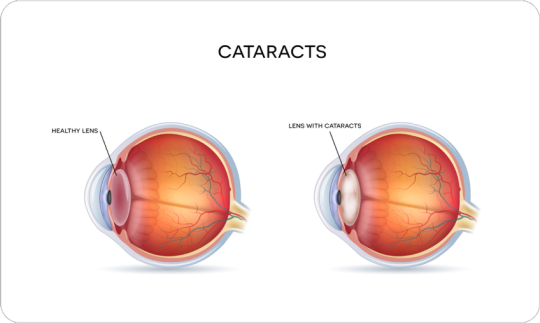
This often results in symptoms such as:
● Blurred or hazy vision
● Increased sensitivity to glare and lights
● Reduced night vision
● Reduced colour and contrast sensitivity
During cataract surgery, the cataract surgeon removes the cloudy natural lens and replaces it with an artificial intraocular lens (IOL). Once the natural lens is removed, it cannot regenerate; therefore, a cataract simply cannot grow back.
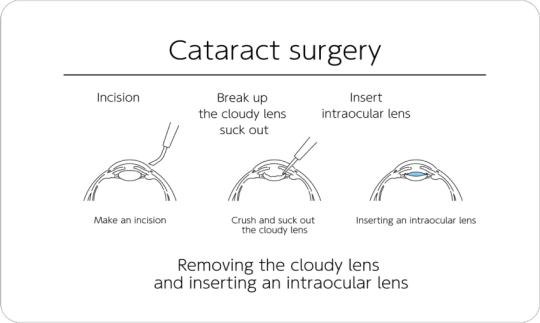
Sometimes following cataract surgery, patients can develop a posterior capsular opacification (PCO). This is a common condition that can occur months or even years after cataract surgery is performed. Some people describe this as a ‘secondary cataract’ because it can cause gradual blurry or hazy vision mimicking the symptoms of a cataract. A PCO is not your cataract growing back, it is a clouding of the lens capsule. The capsule is a thin, transparent membrane that covers your natural lens. During cataract surgery, the cataract
surgeon removes the anterior part of the lens capsule and the opaque lens material, and then positions the IOL inside the remaining posterior capsule. Sometimes after cataract surgery, cells can gather on the surface of the posterior capsule causing it to become cloudy. Fortunately, PCO is easily treated with a quick laser procedure called a YAG capsulotomy. During the procedure, the cataract surgeon uses a laser to create a hole in the capsule allowing the light to pass through, whilst the remaining edge of the capsule continues to hold the IOL in place. The procedure is quick, painless, and performed in an Ophthalmologist’s consultation room. Following a YAG laser capsulotomy, most patients experience a rapid improvement in their vision.
While cataract surgery can significantly improve vision, it does not correct for other eye conditions, such as glaucoma and age-related macular degeneration. So, it is possible for your vision to change over time due to the development of different eye conditions. It is vital to maintain regular eye examinations with an eye care professional, to monitor your eye health.
Cataract surgery is a highly effective and permanent solution for treating cataracts. It is a safe and reliable way to restore vision and improve your quality of life. If you are considering cataract surgery, book an appointment with your Ophthalmologist to discuss any questions you may have.
For more information
Visit us at : https://nexuseyecare.com.au/cataract/can-my-cataract-grow-back/?utm_source=referral&utm_medium=blog-submission&utm_campaign=cataract
0 notes
Text
What is an IOL and which one is the best fit for your lifestyle?

So your Ophthalmologist has told you that you have a cataract, and you have decided to proceed with cataract surgery, but what is an IOL and which one should you choose?
What is a cataract?
Inside your eye you have a natural lens that focuses light onto your retina. Your natural lens has the ability to change shape to allow the eye to focus at different distances, such as focussing for driving distance and then reading up close. A cataract occurs when this lens becomes cloudy and it affects the light passing through clearly.
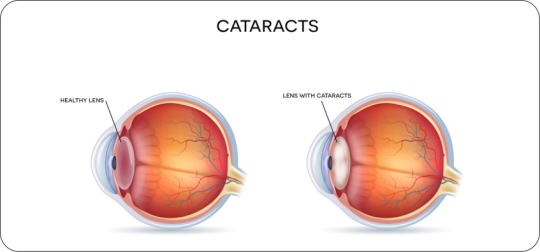
What is an IOL and which one is best for me?
The only way to treat a cataract is to remove the cloudy lens and replace it with an artificial lens implant; this is known as an Intraocular Lens or an IOL.
There are several different types of IOL available, and making the correct choice can seem overwhelming. At Nexus Eye Care, we use specialized equipment to carefully measure your eye and calculate which lens will achieve the best vision for you. Then your Ophthalmologist will take the time to discuss and explain all the lens choices and help you choose which lens will work best for you and your lifestyle.
It is important to understand the types of IOL available and their limitations. It is not possible for all types of IOL to meet every patient’s needs, and you may even have to adjust your expectations accordingly. Making the correct choice is important because removing an IOL, although not impossible, is not the same as removing a cataract, so your surgeon and their eye care team will be working hard to get your IOL choice correct.
The types of IOL can be divided into 4 main categories:
Monofocal IOL
A monofocal IOL provides the best possible vision at one particular focal point. These lenses have been used in cataract surgery for a long time and are still the most common choice of IOL because of the excellent clarity of vision they provide and almost no risk of any unwanted side effects, however you need to accept the use of glasses for any focal point outside the range corrected by your IOL.
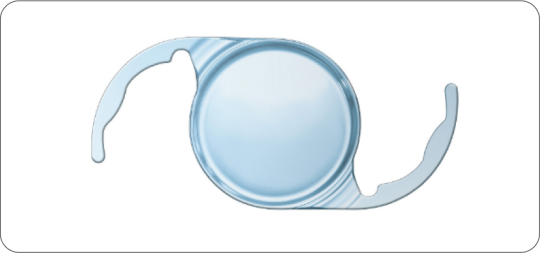
Multifocal IOL
These lenses are made up of concentric rings of different powers to provide corrected vision at distance, intermediate and near. They aim to give a wider range of corrected vision and less dependence on glasses.
However this technology is not without limitations. As light enters the eye, rather than passing through a smooth single powered surface like a monofocal IOL, it passes through multiple changes in lens power. This can result in glare, halos or a ‘glow’ around lights and sometimes a drop in contrast sensitivity.
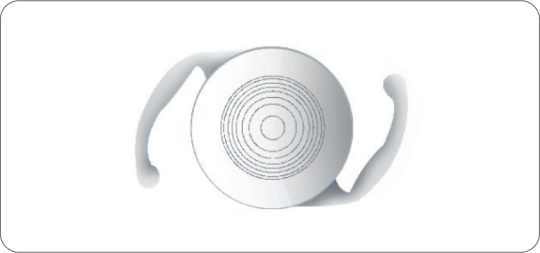
Extended Depth of Focus IOL (EDOF)
An EDOF IOL is new technology similar to the multifocal IOL, but provides a more extended range of sharp vision at distance and intermediate focal lengths. They have smoother transitions between focal powers within the lens and stretch light as it passes through, causing less halos and glare compared to a multifocal IOL. However an EDOF IOL only offers ‘functional’ near vision and patients may still require glasses for reading.
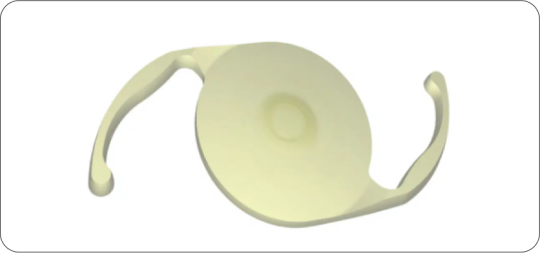
Toric IOL
Astigmatism occurs when the curvature of the cornea at the front of the eye is irregular, or steeper in one direction than the other, a bit like the shape of a football. Toric IOLs are made to correct these different powers. Your Ophthalmologist uses specialized equipment to accurately measure if you have any astigmatism and will advise if these lenses are the best option for you. Monofocal, multifocal and EDOF lenses are available with toric correction.
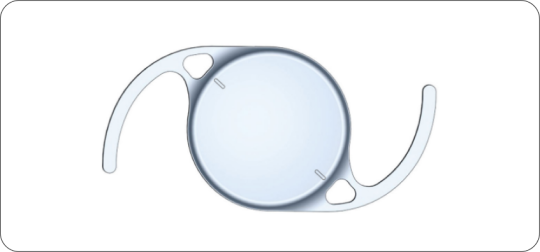
Knowing and understanding the types of IOL available to you is important. You must consider your lifestyle, budget, eye health and your visual expectations. Make an appointment with one of our experienced cataract surgeons at Nexus Eye Care so you can confidently discuss your options and choose the IOL that is most suitable for you.
For more information
Visit us at:
https://nexuseyecare.com.au/blogs/shorter_cataract/?utm_source=referral&utm_medium=blog-submission&utm_campaign=cataract
0 notes
Text
What is an IOL and which one is the best fit for your lifestyle?

So your Ophthalmologist has told you that you have a cataract, and you have decided to proceed with cataract surgery, but what is an IOL and which one should you choose?
Inside your eye you have a natural lens that focuses light onto your retina. Your natural lens has the ability to change shape to allow the eye to focus at different distances, such as focussing for driving distance and then reading up close. A cataract occurs when this lens becomes cloudy and it affects the light passing through clearly.
What is an IOL and which one is best for me?
The only way to treat a cataract is to remove the cloudy lens and replace it with an artificial lens implant; this is known as an Intraocular Lens or an IOL.
There are several different types of IOL available, and making the correct choice can seem overwhelming. At Nexus Eye Care, we use specialized equipment to carefully measure your eye and calculate which lens will achieve the best vision for you. Then your Ophthalmologist will take the time to discuss and explain all the lens choices and help you choose which lens will work best for you and your lifestyle.
It is important to understand the types of IOL available and their limitations. It is not possible for all types of IOL to meet every patient’s needs, and you may even have to adjust your expectations accordingly. Making the correct choice is important because removing an IOL, although not impossible, is not the same as removing a cataract, so your surgeon and their eye care team will be working hard to get your IOL choice correct.
For more information
Visit us at
1 note
·
View note